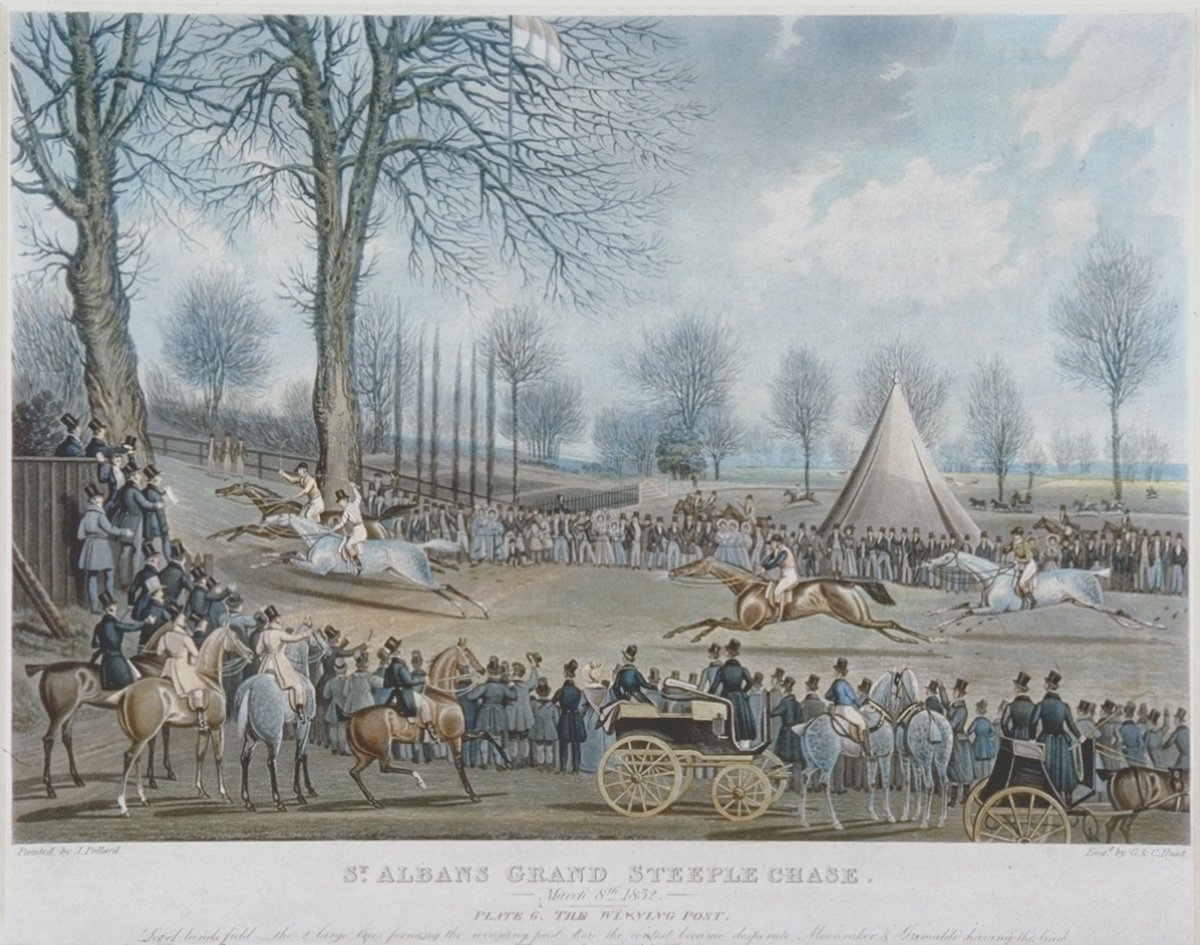St. Albans Grand Steeple Chase, 8 March 1832: Plate 6: The Winning Post
James Pollard (1792 - 1867)
Charles, I Hunt (1803 - 1877)
Colour aquatint

-
About the work
- Location
-
Country: Ireland
City: Dublin
Place: British Embassy
-
About the artist
The painter of coaching and sporting subjects, and engraver James Pollard was the son and pupil of Robert Pollard (1755-1838), an engraver and publisher. He also received help and advice from the wood-engraver and naturalist Thomas Bewick (1753-1828). In 1820 Pollard began to paint coaching scenes and by 1825 he was successful enough to leave his father, marry, and set up on his own. He exhibited a few works at the Royal Academy, the British Institution and the Society of British Artists in Suffolk Street, but worked mainly for dealers and private patrons. In 1840 both his wife and youngest daughter died. This was a blow from which he never fully recovered and his later work shows evidence of decline.
Charles Hunt I was an aquatint engraver. He is best known for his engravings after the works of sporting artists, although his subjects also included transport, animal and topographical scenes. Although Hunt’s aquatints were generally made after the designs of his contemporaries, he sometimes made prints after his own designs. He was the father of Charles Hunt II, also an aquatint engraver of sporting subjects, and is thought to have been the brother of engraver George Hunt, with whom he collaborated early in his career. J. B. Hunt, who engraved a portrait of the trainer John Scott from a design by Harry Hall, published in the 1850s, may be another relative.
-
Explore
- Places
- England, Hertfordshire
- Subjects
- carriage, horseback, horse-racing, jockey, topography, tree, horse, boy, man, woman, top hat, tent/marquee
- Materials & Techniques
- aquatint, colour aquatint
-
Details
- Title
- St. Albans Grand Steeple Chase, 8 March 1832: Plate 6: The Winning Post
- Date
- Medium
- Colour aquatint
- Acquisition
- Purchased from Parker Gallery, August 1974
- GAC number
- 11381